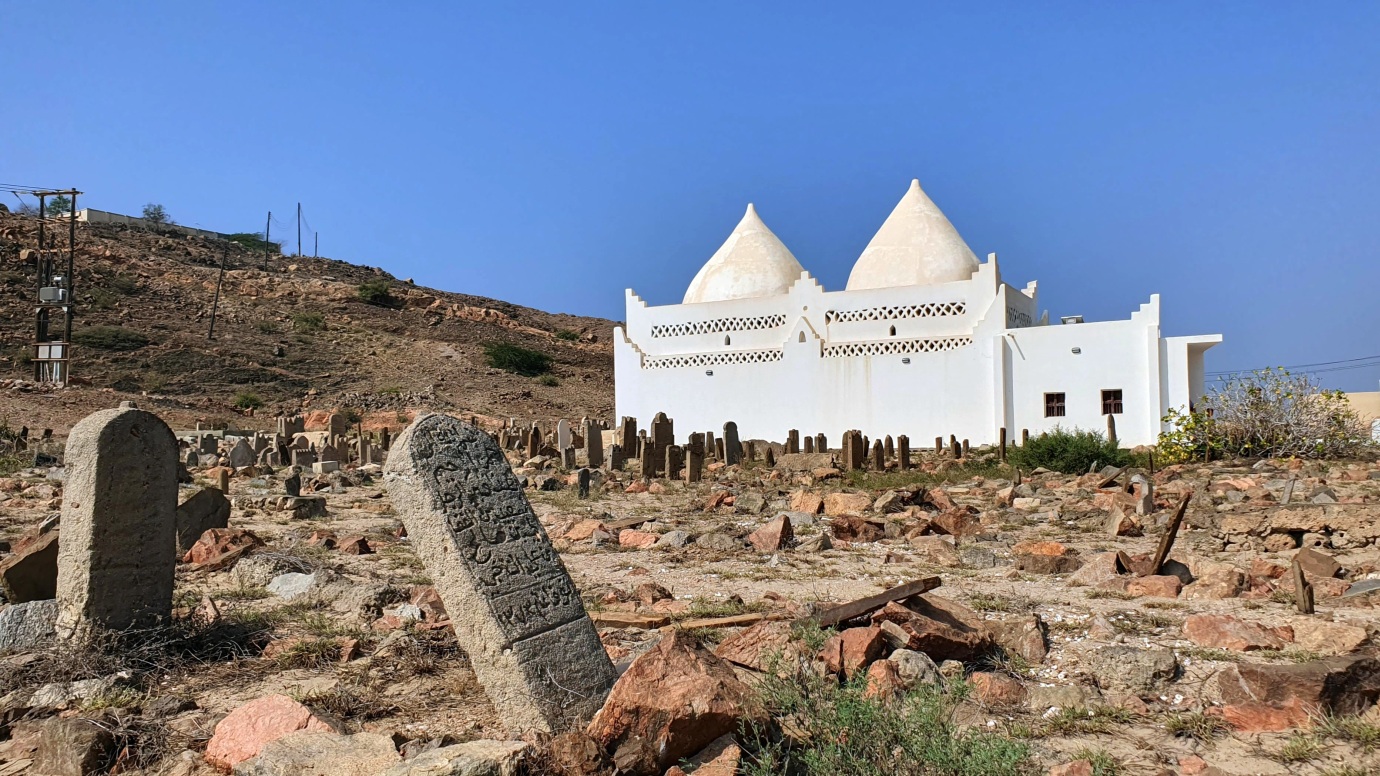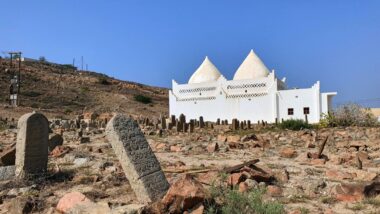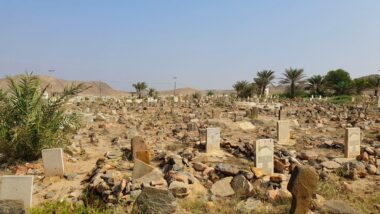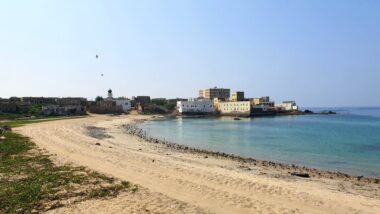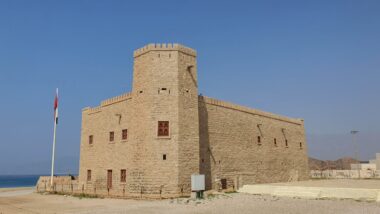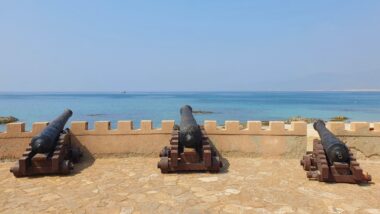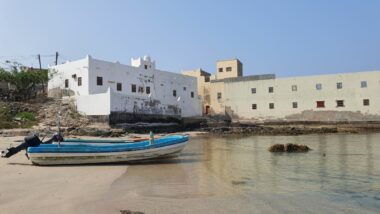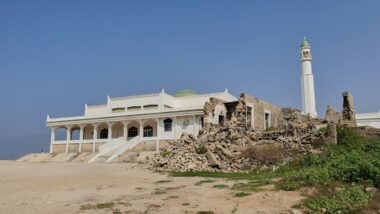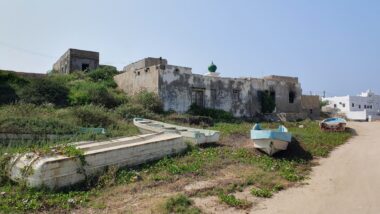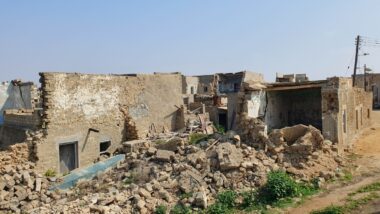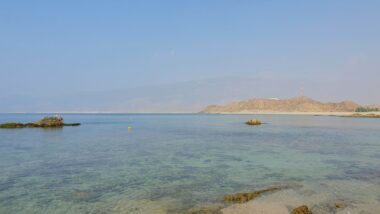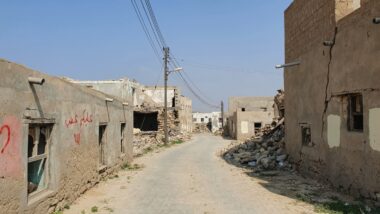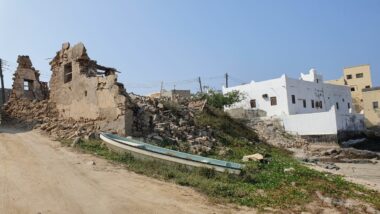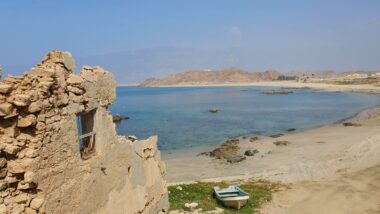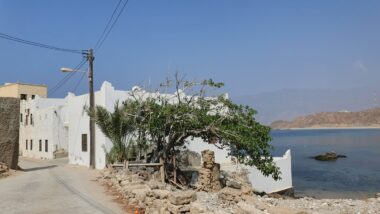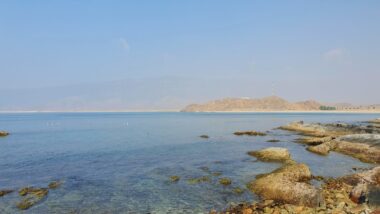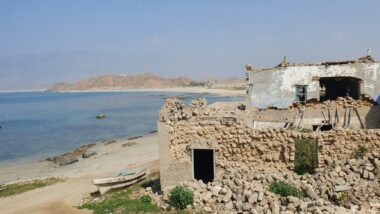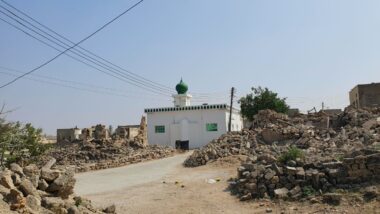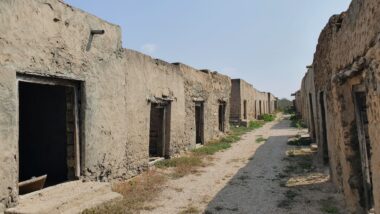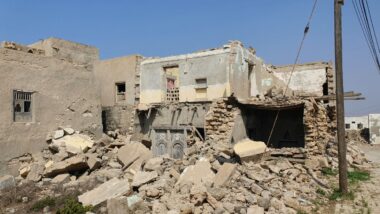We made a short stop in the fishing town of Mirbat to stroll around its harbor and merchant houses in the ruined old quarter. Some locals remain, but many are derelict as modern residents opt for concrete lodgings over the traditional mud and wattle. Some of the old buildings have kept their fine doors and latticed window frames, illustrating the former wealth of this Dhofari outpost.
We parked next to the town’s main fort, which is now derelict despite being the site of the well-documented Battle of Mirbat. Nine soldiers kept 300 insurgents from taking Mirbat during this battle in 1972, during the Dhofari insurrection. The Sultan called in the British armed forces to assist, and the Special Air Service (SAS) earned two British Victoria Crosses but was not awarded to help keep the war out of the public eye.
Our last stop was Bin Ali’s Tomb, which houses the remains of Mohammed Bin Ali, a descendant of the Prophet Muhammad. This tiny tomb, with its two distinctive onion domes, marks the old entrance to town. The white-washed building makes a striking contrast against the russet-colored rock of the headland, making it impossible to miss when driving along the old road to Mirbat. As with most such tombs in Oman, the interior is plain, with a simple green cloth covering the holy burial site. A cemetery surrounds the area.
Parking location – Mirbat: 16.992695N 54.691429E


